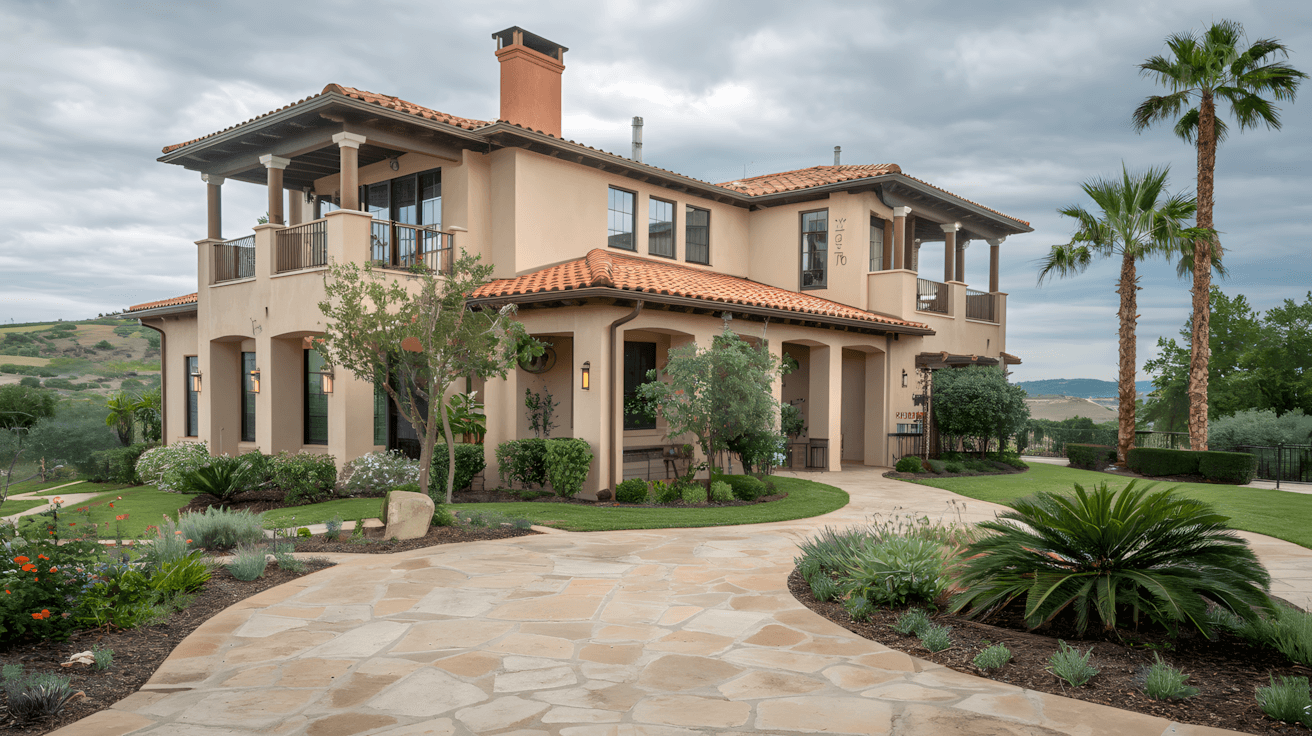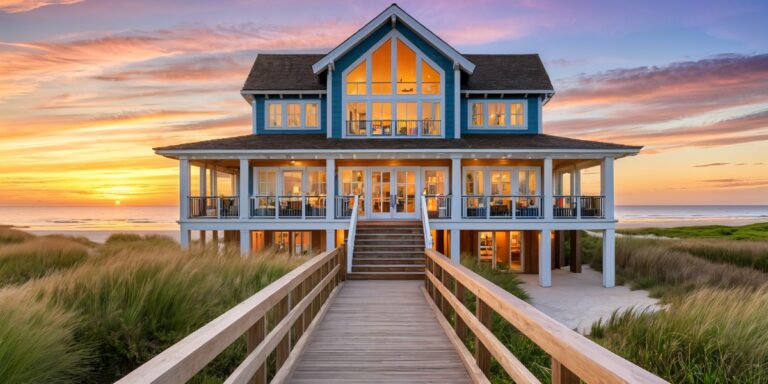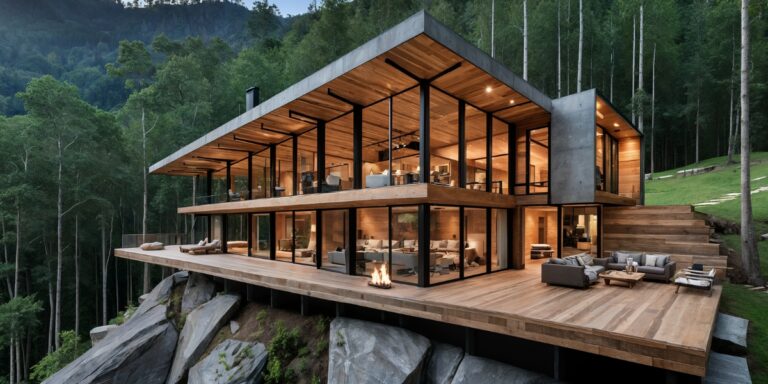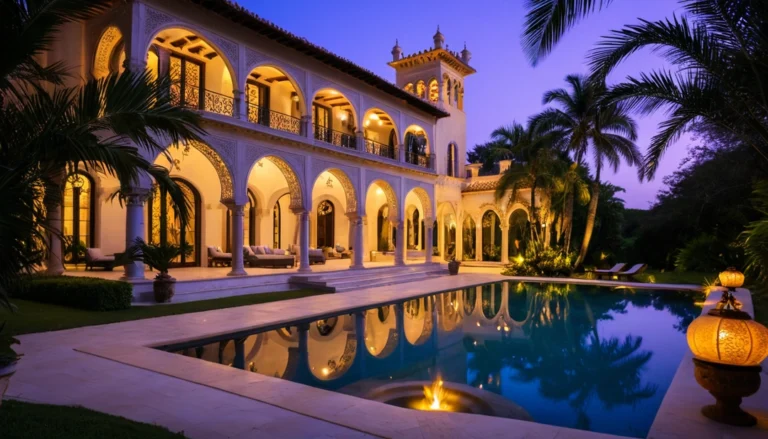After designing and consulting on hacienda-style home exteriors for clients across different climates and regions, I’ve discovered that creating an authentic Mexican hacienda exterior requires understanding both the historical climate adaptations that shaped this architecture and the modern maintenance realities that determine long-term success.
From my experience working with homeowners on hacienda-style projects, I’ve learned which romantic exterior features photograph beautifully but fail after a few seasons of weather exposure, and which time-tested design elements genuinely provide the durability, climate control, and livability that made this architecture successful for centuries.
These 15 exteriors represent examples that successfully balance authentic hacienda character with practical performance.
Understanding Authentic Hacienda Exterior Design
Traditional Mexican hacienda exteriors developed from practical necessity in hot, arid climates with seasonal rains. The thick stucco walls, terracotta roofs, covered courtyards, and strategic landscaping all served specific functions: providing thermal mass for temperature regulation, managing water runoff and storage, creating shade and cooling microclimates, and using local materials that performed well in regional conditions.
Modern interpretations succeed when they respect these functional origins while adapting to contemporary needs.
Grand Scale Landscape Integration
1. Two-Story Pathway Integration

This approach demonstrates how traditional hacienda landscaping serves both aesthetic and functional purposes in large-scale designs.
Key Functional Elements:
- Curved stone pathways for water management – directs rainfall away from foundations while creating attractive circulation
- Terracotta roofing with proper pitch – ensures effective water shedding while providing thermal mass for temperature regulation
- Strategic plant placement for microclimate control – uses vegetation to create cooling zones and wind protection
- Large windows positioned for cross-ventilation – maximizes natural airflow for passive cooling
Landscape functionality: Traditional hacienda landscaping wasn’t decorative—it served essential functions of water management, climate control, and food production.
2. Mediterranean Stone Integration

This mixed-material approach shows how traditional builders combined materials for optimal performance and longevity.
Key Functional Elements:
- Natural stone accents for durability – provides weather resistance at vulnerable areas like entrances and corners
- Clay tile roofing for thermal performance – creates natural air circulation while protecting from intense sun and rain
- Multiple balconies for outdoor living – extends usable space while providing shaded areas during hot periods
- Grand archway for enhanced airflow – facilitates natural ventilation while creating impressive architectural presence
Material strategy: Traditional material combinations served both practical and aesthetic purposes, with each material chosen for specific performance characteristics.
3. Mountain Setting Climate Adaptation

This elevated approach demonstrates how hacienda design adapts to challenging topography and weather conditions.
Key Functional Elements:
- Stone and stucco combination for weather resistance – provides durability against mountain weather while maintaining thermal mass
- Strategic window placement for view maximization – captures vistas while controlling solar heat gain and wind exposure
- Pool positioning for microclimate enhancement – creates evaporative cooling while serving as water storage for fire protection
- Terraced landscaping for erosion control – manages water runoff while creating usable outdoor spaces
Mountain adaptation: High-elevation haciendas require special attention to wind protection, drainage, and structural stability.
Climate-Responsive Color and Material Applications
4. White Stucco Heat Reflection

This classic approach demonstrates the functional benefits of traditional hacienda color choices in hot climates.
Key Functional Elements:
- White stucco walls for solar heat reflection – reduces cooling costs while maintaining authentic appearance
- Dark tile roofing for thermal contrast – creates stack ventilation effect while providing durability
- Large glass openings with proper orientation – maximizes natural light while minimizing heat gain
- Stone pathways for heat management – provides cool walking surfaces while directing foot traffic
Color science: Traditional hacienda colors weren’t arbitrary—they reflected practical needs for heat management and material availability.
5. Spanish Colonial Pool Integration

This comprehensive approach shows how water features enhance both beauty and functionality in hacienda design.
Key Functional Elements:
- Arched doorways for natural ventilation – creates airflow pathways that reduce indoor temperatures naturally
- Wrought iron balconies for security and airflow – provides protection while allowing air circulation
- Swimming pool for evaporative cooling – creates natural air conditioning effect for surrounding areas
- Strategic patio placement – positions outdoor living areas to take advantage of pool cooling and prevailing breezes
Water integration: Pools and fountains in traditional haciendas served climate control functions beyond recreation.
6. Succulent Landscape Water Conservation

This drought-tolerant approach reflects the water-wise principles essential to authentic hacienda living in arid climates.
Key Functional Elements:
- Drought-resistant plant selection – reduces water requirements while providing year-round beauty and cooling
- Wrought iron window grilles for security and ventilation – allows airflow while providing protection
- Irregular stone pathways for drainage – manages water runoff while creating attractive circulation
- Strategic succulent placement – provides cooling transpiration with minimal water requirements
Water conservation: Authentic hacienda landscaping prioritized water efficiency through plant selection and irrigation design.
Outdoor Living Integration
7. Courtyard Tree Shade Management
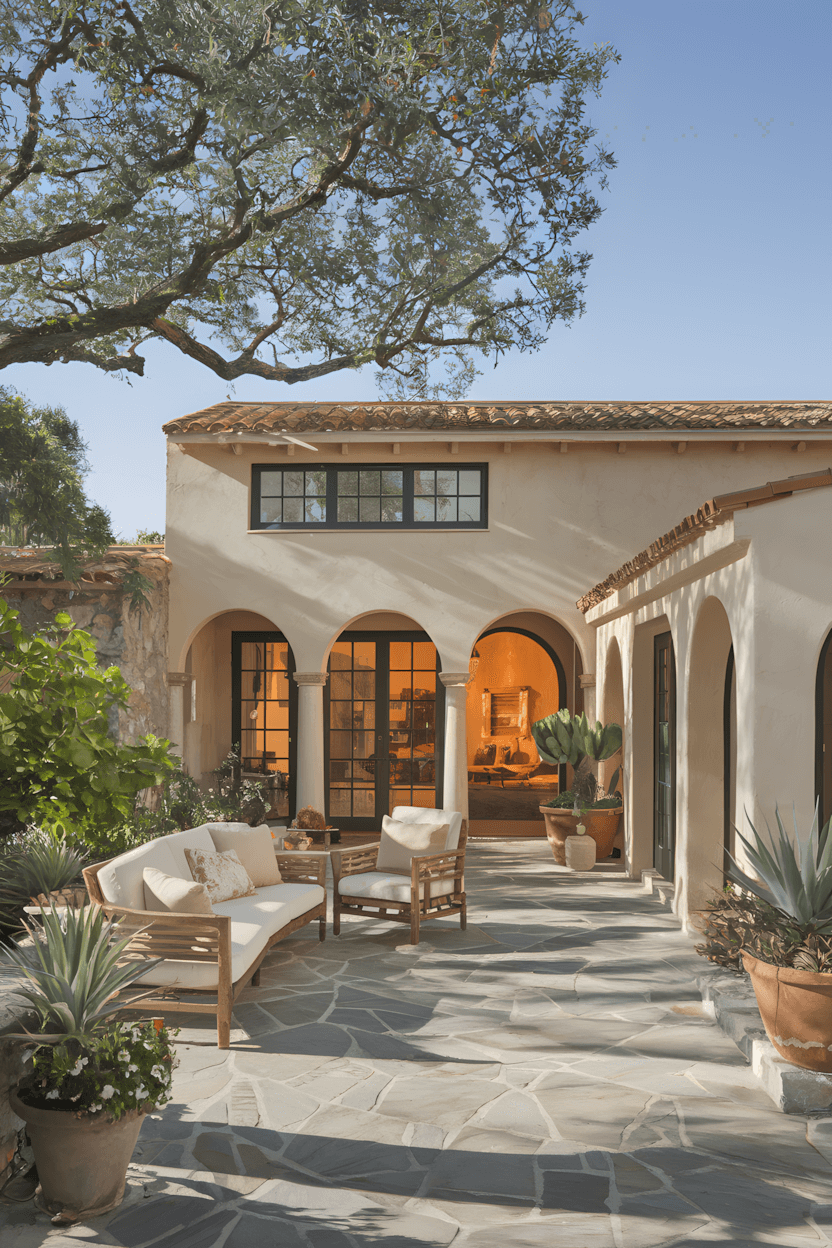
This intimate approach demonstrates how mature trees can be integrated into hacienda design for natural climate control.
Key Functional Elements:
- Large tree integration for natural cooling – provides shade and transpiration cooling while creating intimate outdoor rooms
- Stone paving for thermal comfort – stays cooler than other materials while providing durable outdoor flooring
- Arched openings for indoor-outdoor flow – blurs boundaries between interior and exterior living spaces
- Strategic furniture placement – positions seating to take advantage of natural shade and breezes
Natural cooling: Mature trees provide irreplaceable climate control benefits that mechanical systems cannot match.
8. Ornate Ironwork Functional Beauty
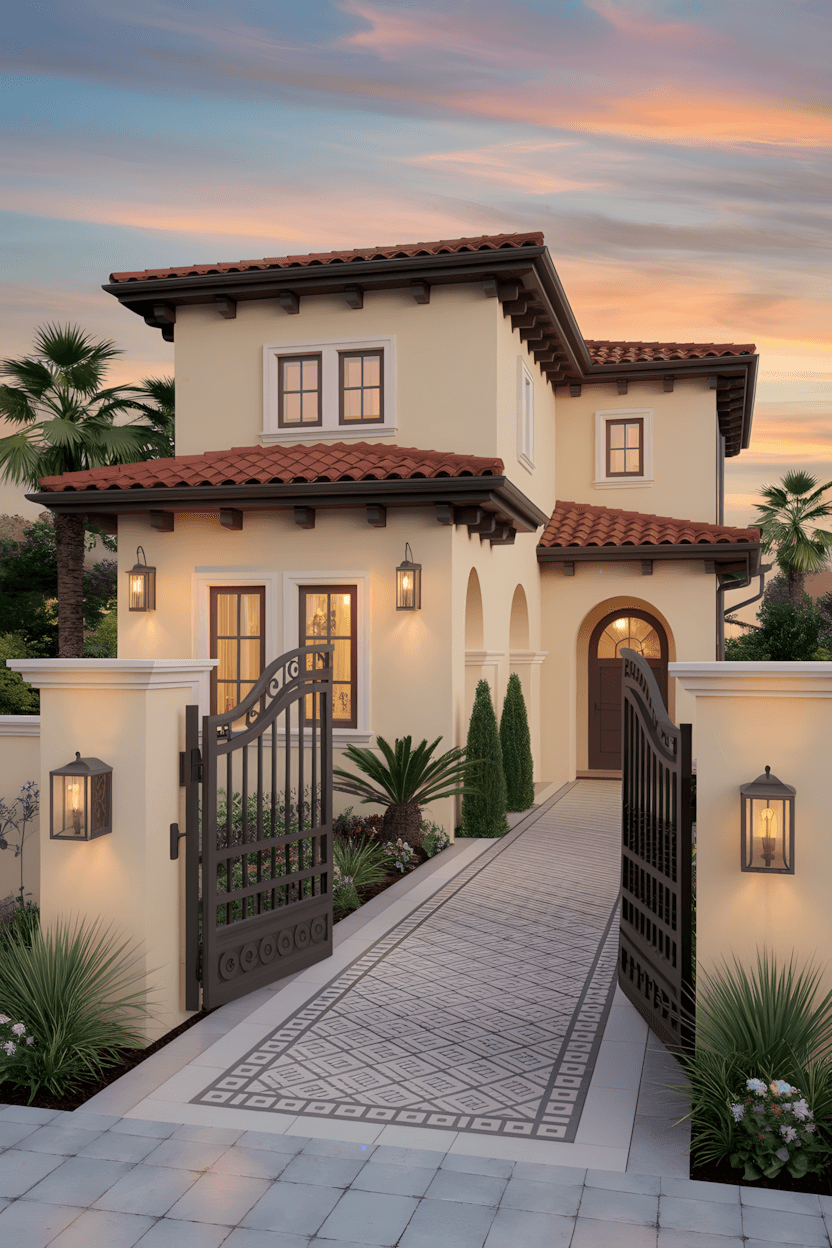
This traditional approach shows how decorative elements can serve practical security and ventilation purposes.
Key Functional Elements:
- Ornate iron gates for security and style – provides protection while maintaining visual appeal and airflow
- Wooden beam accents for thermal performance – adds authentic character while providing natural insulation
- Patterned walkways for water management – creates attractive surfaces while directing drainage
- Strategic landscaping for privacy and cooling – uses plants to create comfortable microclimates
Security integration: Traditional hacienda security features enhanced rather than compromised architectural beauty.
9. Spacious Patio Climate Control
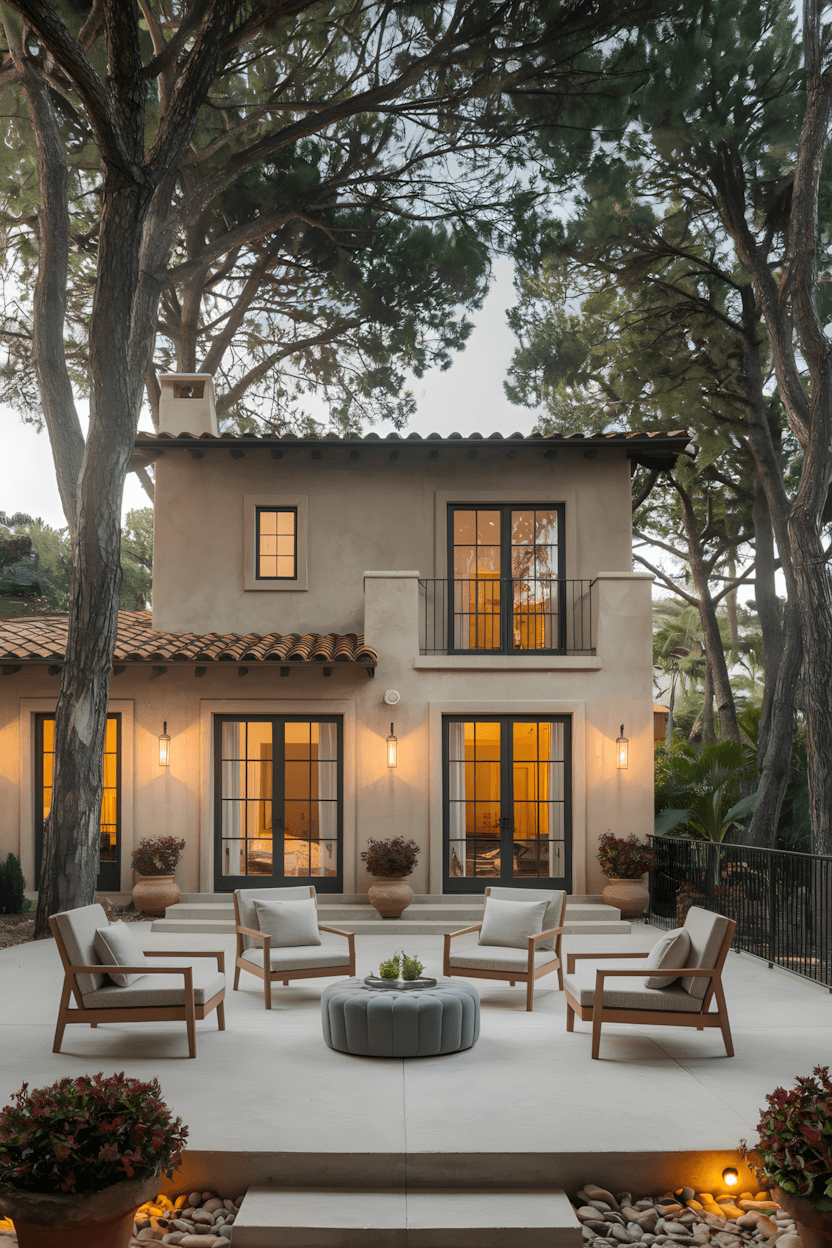
This outdoor living approach demonstrates how covered areas extend usable space while providing weather protection.
Key Functional Elements:
- Large covered patio for weather protection – provides outdoor living space regardless of weather conditions
- Strategic furniture positioning – takes advantage of natural shade and breezes for comfort
- Potted plant flexibility – allows seasonal adjustments while maintaining cooling benefits
- Glass wall integration – maximizes natural light while providing climate control
Covered space functionality: Traditional haciendas maximized covered outdoor areas for comfortable living in challenging climates.
Architectural Detail Integration
10. Stone Archway Entrance Enhancement
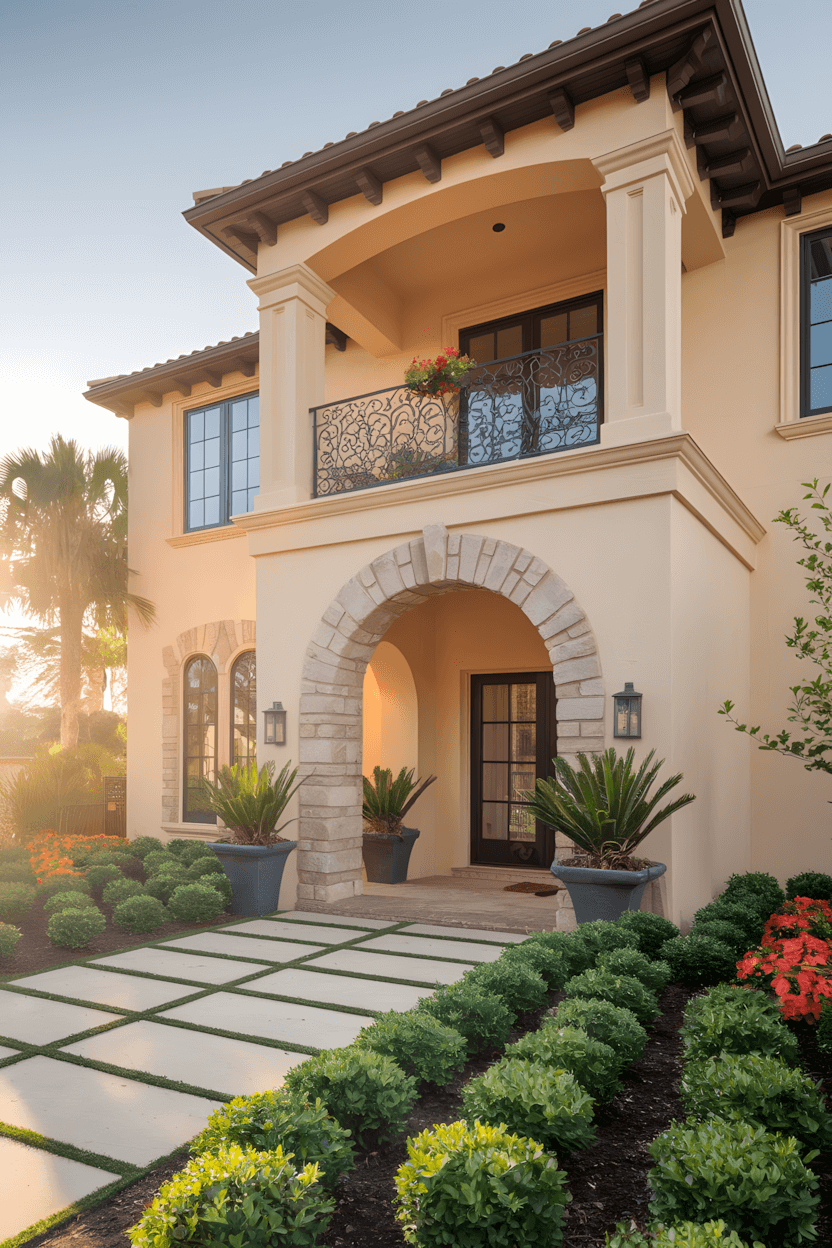
This entrance approach shows how architectural details can enhance both beauty and functionality.
Key Functional Elements:
- Stone archway for structural strength – provides durable entrance while creating impressive architectural presence
- Mixed material harmony – combines stucco and stone for optimal performance and visual interest
- Wrought iron balcony for outdoor access – provides upper-level outdoor space while enhancing facade
- Strategic plant placement – softens hard architectural lines while providing cooling benefits
Entrance functionality: Traditional hacienda entrances created transition zones that helped with climate control.
11. Multi-Level Slope Adaptation
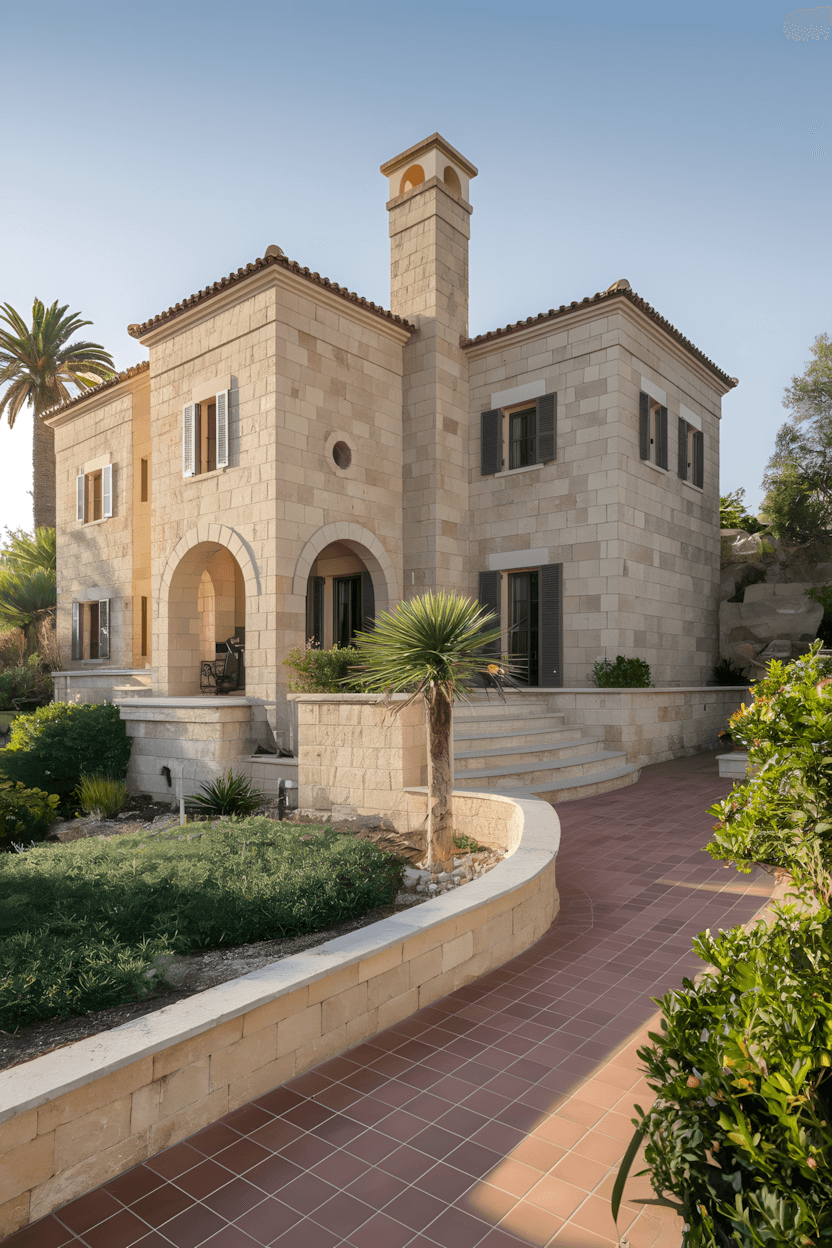
This challenging site approach demonstrates how hacienda design adapts to difficult topography while maintaining functionality.
Key Functional Elements:
- Multi-tiered design for slope integration – works with natural contours rather than requiring extensive site modification
- Central chimney for heating efficiency – provides effective heating while creating architectural focal point
- Natural stone construction for durability – ensures longevity in challenging weather conditions
- Strategic access planning – provides safe, convenient entry despite challenging topography
Slope strategy: Traditional haciendas often adapted to challenging sites through creative architectural solutions.
12. Luxury Pool Landscape Integration
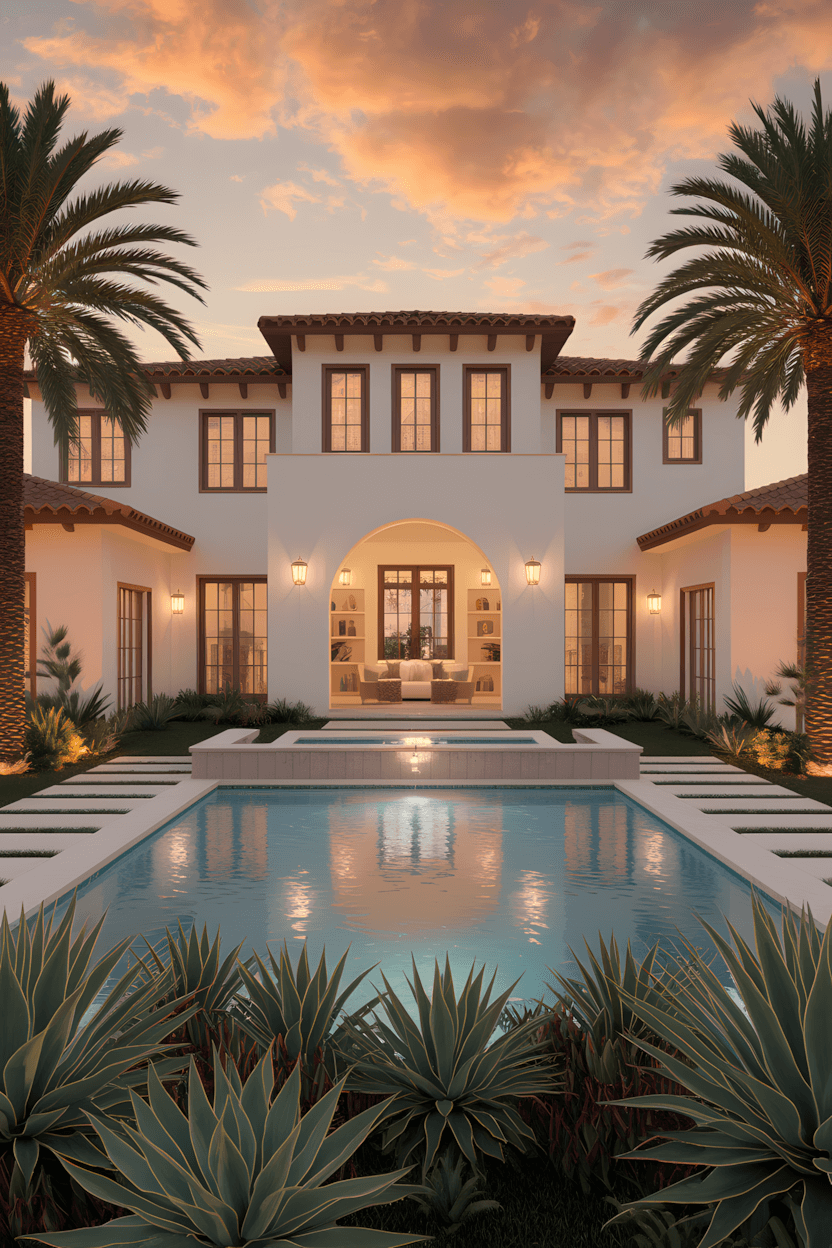
This resort-style approach demonstrates how modern amenities can enhance traditional hacienda outdoor living.
Key Functional Elements:
- Pool integration with architecture – positions water feature to enhance rather than compete with building design
- Stone step terracing for accessibility – provides safe access while managing site drainage
- Strategic shade structure – protects outdoor living areas while maintaining architectural harmony
- Landscape buffer zones – creates privacy while providing cooling plant benefits
Luxury integration: Modern amenities work best when they support rather than compromise traditional hacienda principles.
Evening and Entertainment Spaces
13. Fountain Courtyard Functionality
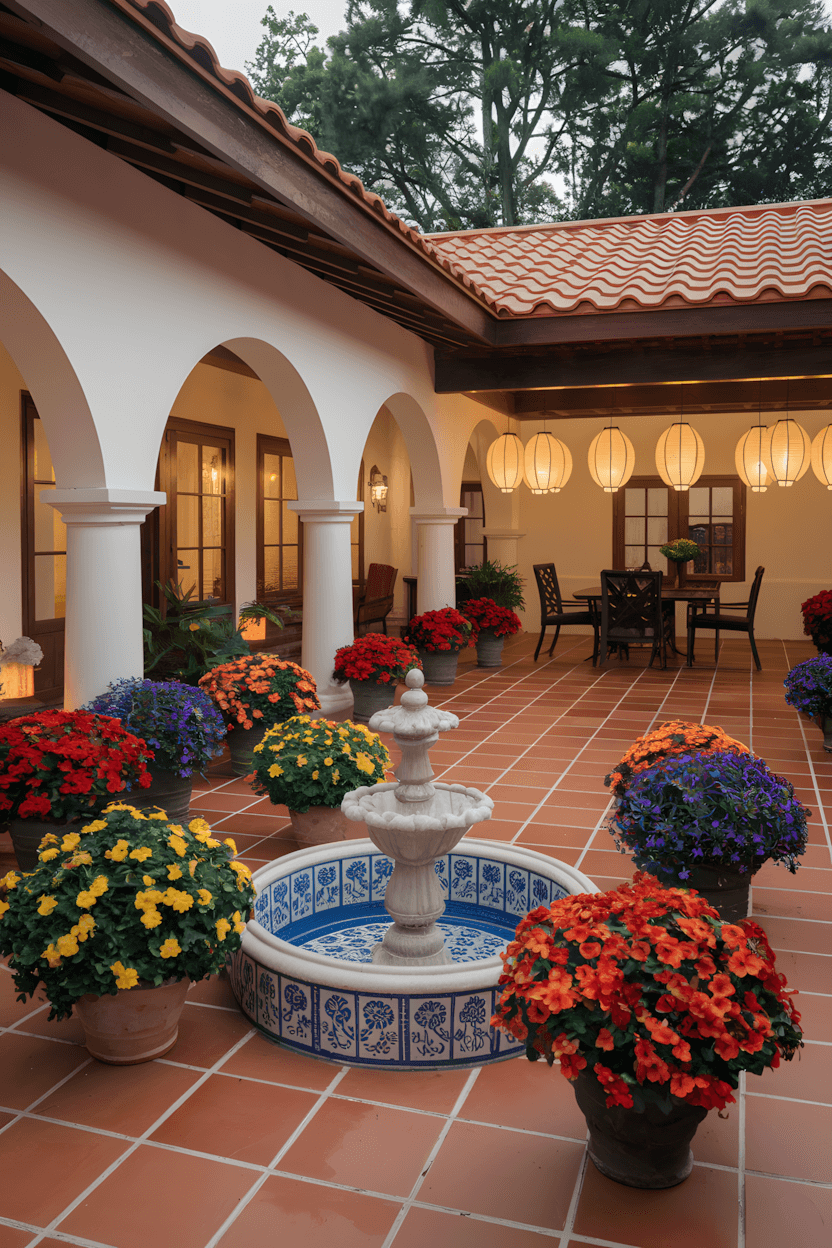
This water feature approach shows how traditional elements create both beauty and practical benefits.
Key Functional Elements:
- Central fountain for evaporative cooling – provides natural air conditioning for surrounding spaces
- Terracotta tile flooring for thermal comfort – stays cool underfoot while providing authentic character
- Strategic lighting for evening use – extends comfortable outdoor hours while maintaining authentic atmosphere
- Covered arcades for weather protection – provides outdoor living space regardless of conditions
Water feature function: Traditional fountains served essential climate control purposes beyond visual appeal.
14. Evening Lighting Climate Extension
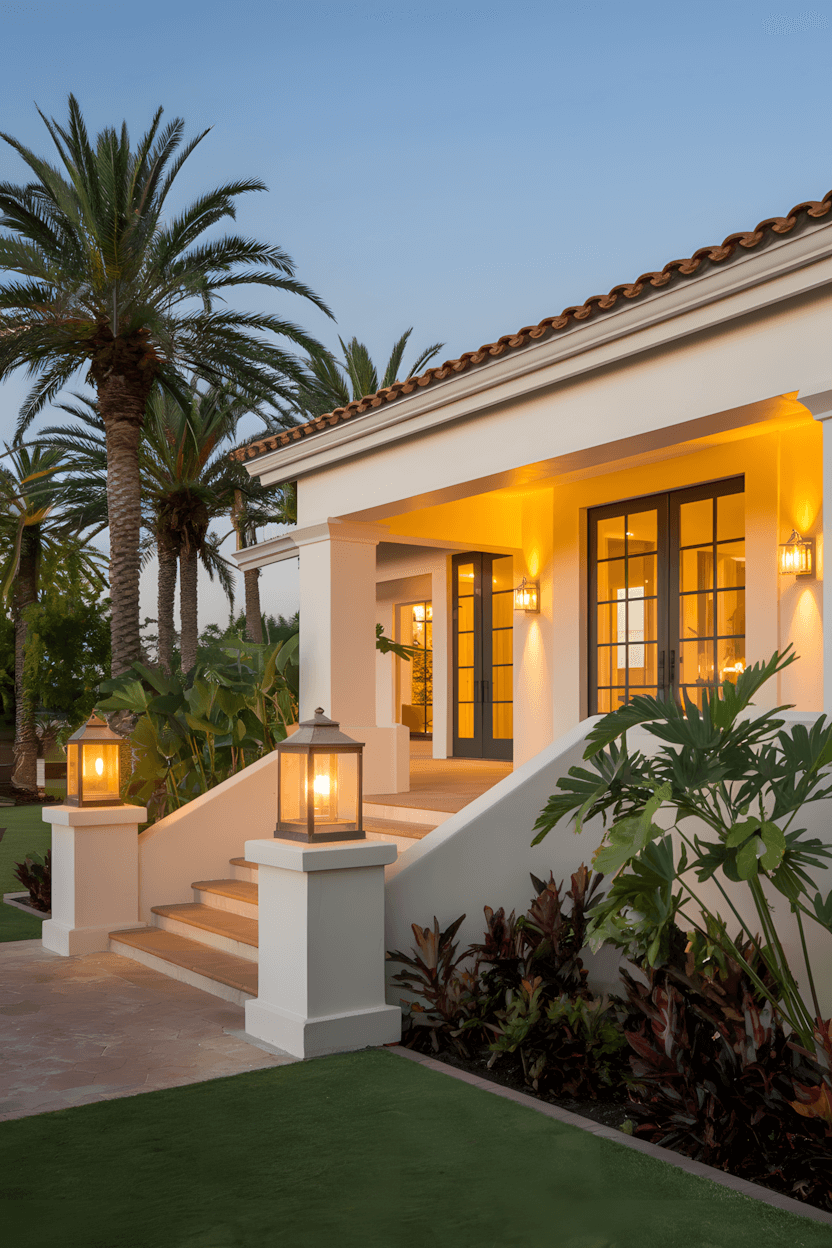
This illumination approach demonstrates how lighting can extend comfortable outdoor living hours.
Key Functional Elements:
- Warm lighting for evening ambiance – creates welcoming atmosphere without generating excessive heat
- Strategic fixture placement – provides necessary illumination while avoiding glare and heat buildup
- Garden integration for cooling – uses plants to moderate evening temperatures naturally
- Multiple entrance options – provides flexibility for different weather and social conditions
Evening functionality: Successful hacienda design prioritizes comfortable evening outdoor living when temperatures are most pleasant.
15. Fire Feature Social Integration
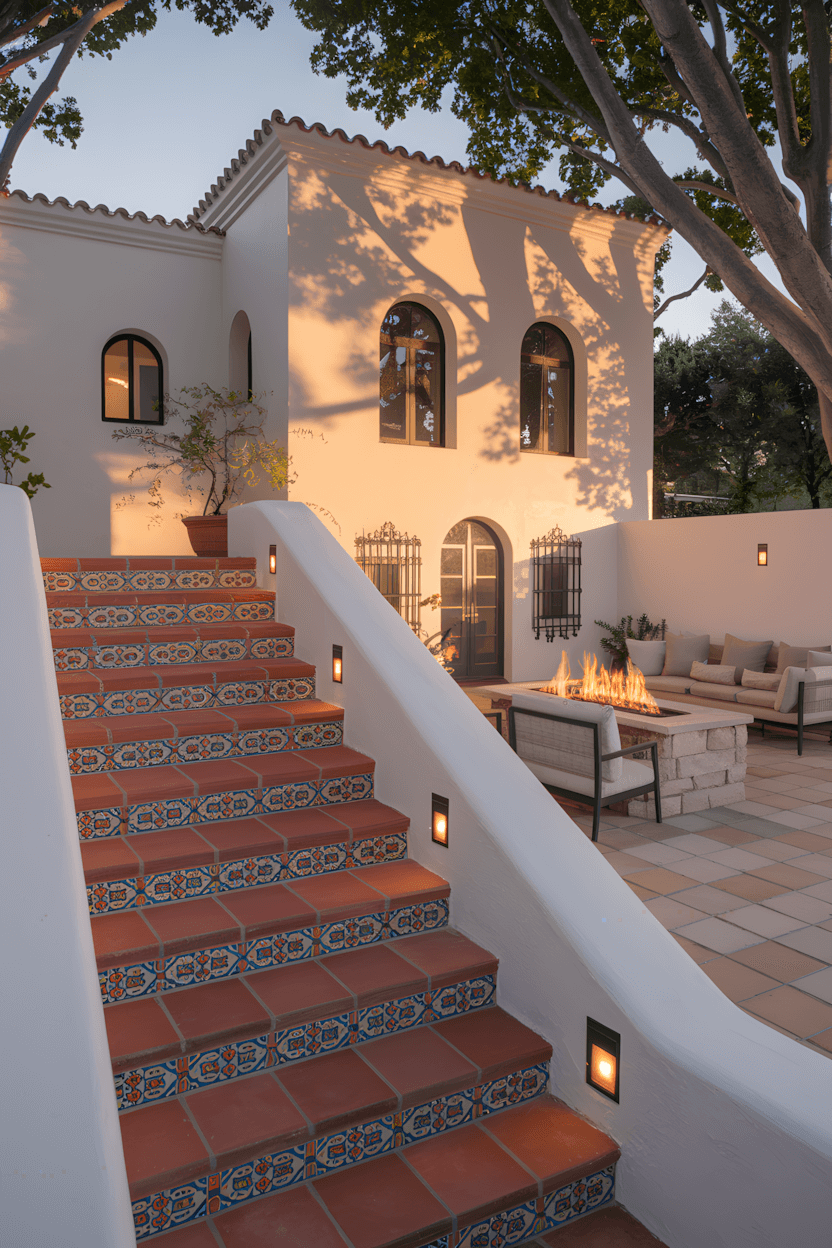
This gathering space approach shows how outdoor heating can extend usable seasons while maintaining hacienda character.
Key Functional Elements:
- Central fire pit for social gathering – creates focal point for family and entertainment activities
- Tiled steps for durable access – provides safe, attractive circulation while managing water drainage
- Strategic seating arrangement – positions furniture to take advantage of warmth and conversation
- Tree framing for natural boundaries – uses existing landscape to create intimate outdoor rooms
Social functionality: Traditional haciendas prioritized outdoor spaces for family gathering and community interaction.
Creating Functional Hacienda Exteriors
After years of hacienda exterior projects, I’ve learned that successful Mexican hacienda-style exteriors balance three essential considerations: authentic materials and techniques that genuinely improve performance and longevity, climate-responsive design that works with rather than against local weather patterns, and landscape integration that supports both beauty and practical functions like water management and cooling.
The hacienda exteriors that owners love long-term are those that solve real challenges—weather protection, energy efficiency, comfortable outdoor living—while providing the authentic character and cultural connection that drew them to hacienda style initially. Focus on understanding the functional reasons behind traditional design elements rather than copying them purely for appearance.
Most importantly, adapt hacienda principles to your specific climate, site conditions, and lifestyle needs.
The goal isn’t to recreate 19th-century Mexican architecture exactly, but to apply time-tested principles for creating beautiful, functional exteriors that work harmoniously with their environment and genuinely support your daily living patterns.
Which of these authentic hacienda approaches matches your climate, site conditions, and vision for indoor-outdoor living?

